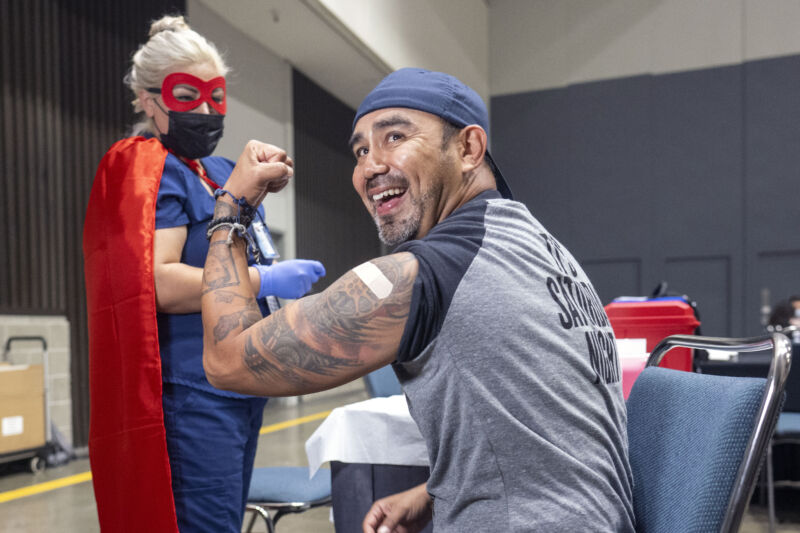The US government will soon authorize another round of COVID-19 vaccine booster doses to certain high-risk populations, namely people 65 and older and those with compromised immune systems, according to a Washington Post report that cited anonymous officials familiar with the plan.
The spring booster plan for high-risk individuals in the US would resemble booster offerings already in place in Canada and the United Kingdom, and it would put the country largely in agreement with updated recommendations released last week by the World Health Organization. The agency's advisory group on immunizations determined that, as of now, healthy adults and children do not need additional boosters in the near term, but certain high-risk groups should be offered boosters every six to 12 months.
The US's spring boosters will be offered to high-risk people who have gone at least four months since their last shot and want additional protection, the Post reported. The US last authorized a booster dose in September, meaning that some in the high-risk group may be around seven months past their last dose.
Before the doses are available, the Food and Drug Administration will first announce an authorization, which will reportedly occur in the next few weeks. The Centers for Disease Control and Prevention will then need to sign off, which is expected to occur quickly and will make the doses available immediately. They will likely be free to all those who want them, as the federal government has a glut of boosters.
The authorization will be for another shot of the bivalent boosters, which target both the ancestral coronavirus strain and the more recent omicron subvariants BA.4 and BA.5. Omicron subvariants continue to dominate transmission in the US and globally. The omicron subvariant XBB.1.5 currently accounts for an estimated 88 percent of cases in the US, according to the CDC. XBB.1.5 is of the XBB lineage, which was born from a recombination of two BA.2 sublineages.
Real-world data and clinical studies have indicated that the bivalent boosters are generally holding up well against the omicron subvariants in terms of long-term protection from severe disease and short-term protection against infection. But some studies have suggested that the elderly and immunocompromised require frequent doses to bolster protection against severe disease.
Dose debate
Still, experts have expressed mixed opinions about who should get boosted, when, and with what. While most agree that frequent boosters benefit the immunocompromised, opinions vary on shots for older adults, with suggested age cut-offs ranging from the 50s to 70s and some saying it should largely depend on health status as well as age.
While age and immune status are the high-risk factors identified for spring boosters in the US, the WHO advisers were more inclusive in their definition of high risk, including pregnant people, younger people with significant comorbidities (such as heart disease and diabetes), and frontline health workers, in addition to older adults and the immunocompromised.
A study published last month in Nature found boosters given during pregnancy, particularly in the third trimester, reduced the risk of newborns being hospitalized with COVID-19 in the first four months of life. It's unclear if the FDA will include an updated authorization for pregnant people in its expected announcement of spring boosters or if the agency will make provisions for the other high-risk groups identified by the WHO advisers.
So far, the FDA has consistently pitched a plan to treat COVID-19 booster doses much like seasonal flu shots, with reformulations decided each spring and updated shots rolled out widely in the fall. Whether the agency will limit boosters to select groups, as the WHO has advised for now, will likely be a major discussion topic among the FDA's advisory group.
The formula of future boosters will also likely draw debate, with some experts suggesting a monovalent booster—one that would target only the current omicron strains—would be better than the bivalent formulation.
For now, only 16.5 percent of the US population—and only 42 percent of people age 65 and older—have received a bivalent booster dose.



3175x175(CURRENT).thumb.jpg.b05acc060982b36f5891ba728e6d953c.jpg)

Recommended Comments
Join the conversation
You can post now and register later. If you have an account, sign in now to post with your account.
Note: Your post will require moderator approval before it will be visible.